Terraform State Management Strategies: Effectively managing Terraform state
- Ankush Madaan
- Blog
About
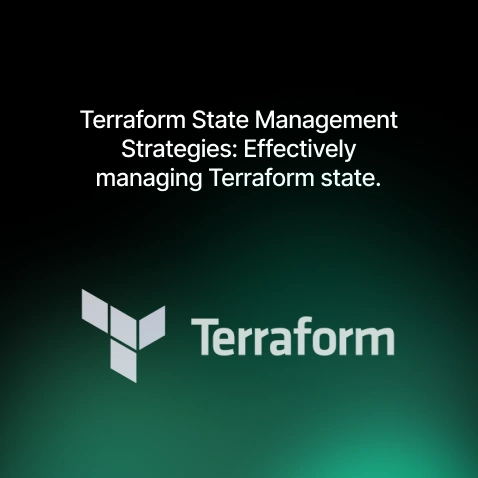
Industries
- AWS, AWS Secret Manager, DevOps, Terraform
Share Via
Introduction
Terraform is a leading infrastructure-as-code tool developed by HashiCorp and has grown to become a keystone in modern infrastructure management. By using a declarative approach, Terraform enables organizations to define, provision, and manage infrastructures that stretch across many cloud providers. One of the critical components at the core of Terraform’s functionality is the state file. This acts like a database of real-world resources managed by Terraform and their corresponding configurations.
The state file is important in that it retains information about the current state of your infrastructure: resource IDs, attributes, and metadata. It helps in generating changes required by changes in configuration. In the absence of a state file, Terraform would be unable to know what is provisioned or even how to apply incremental changes or track current state. This will act as the single source of truth for Terraform while handling infrastructures; this means Terraform can create, update, and delete infrastructures predictively and consistently.
Why State Management is Crucial
State management, in a general sense, is the most important part of using Terraform. Improper handling of the state files might result in configuration drift, resource conflicts, and even accidental deletion of resources. As the state file contains some sensitive information of the infrastructure, handling this file must be appropriate, and it has to be kept safe from unauthorized access or corruption.
Proper state management ensures that your infrastructure is reproduced identically across different environments like development, staging, and production. Keeping the state files correct and up-to-date enables Terraform to plan the changes correctly in your infrastructure and thus avoid the discrepancies between the intended and real states of your infrastructure.
Another important role of state management is team collaboration. In multi-user environments, such as when different team members are working on the same infrastructure, there needs to be a way to share and lock state files to avoid racing conditions that might introduce conflicts or inconsistencies. That’s where remote state backends come in—storing state files centrally for collaboration on them as a team.
In Terraform, state management is one of the basic constituents within the infrastructure-as-code approach. It ensures that your infrastructure is reliably, securely, and consistently managed across all environments, cloud accounts, and deployment regions. . Understanding state files and how to manage them in the best way will allow organizations to have maximum value derived from Terraform and avoid common pitfalls related to automating the infrastructure.
Understanding Terraform State
A Terraform state is an integral part of Terraform management of infrastructure. It is a file recording the present state of every infrastructure resource managed by Terraform. The file holds information about each single resource, its attributes, and metadata, generally acting as the single source of truth about the state of the infrastructure.
How Terraform Uses State Files?
Terraform relies on the state file to map your infrastructure resources as defined in your configuration files to the actual resources in the cloud or other platforms. This mapping allows Terraform to understand what resources are being managed, how they relate to one another, and how they should be updated or destroyed.
When you run a terraform plan, Terraform compares the current state of resources, as stored in the state file, with the desired state specified in the configuration. This comparison helps Terraform identify what changes are needed to align the actual infrastructure with the intended configuration. For instance, if you’ve added a new resource in the configuration, Terraform will detect that this resource doesn’t exist in the state file and will proceed to create it.
In addition to mapping resources, the state file also tracks metadata, including resource dependencies and other vital information that might not be explicitly defined in your configuration. This metadata is essential for Terraform to manage complex infrastructures, ensuring that operations like resource creation or destruction are performed in the correct order to maintain dependencies and prevent conflicts.
Moreover, the state file enhances Terraform’s performance. Instead of querying the cloud provider or infrastructure platform every time it needs to assess the infrastructure, Terraform uses the state file to quickly determine what the current state is. This efficiency is especially important in large-scale environments, where querying each resource could be time-consuming and costly.
Understanding the role of the Terraform state file is crucial for successful infrastructure management, as it underpins Terraform’s ability to manage, track, and update infrastructure accurately.
Common Challenges in Terraform State Management
- State File Corruption : State file corruption is one of the major risks associated with Terraform and may further create high-severity problems in infrastructure management. Due to irreconcilable corruption in a state file, Terraform will lose track of existing resources; therefore, if not detected and handled correctly, it will result in either wrong changes in infrastructure or their complete deployment failure. This type of corruption could be due to a variety of factors, such as file system errors, manual editing, or improper shutdowns during state operations. Such corruption can have a deep impact, ranging from expensive downtime to misconfigurations.
- Concurrency Issues : Concurrency issues arise when several users or automation tools are attempting to update the Terraform state file at the same time. Since this state file is a very key resource, Terraform is built such that only a single process may write to it at any particular time. If appropriate locking is not put in place, it can overwrite the state file or even corrupt it when concurrent operations are done, hence leading to inconsistencies in the infrastructure. Especially in collaborative environments, where many people in a team are working on the same infrastructure, this can pose quite an issue.
- State File Size and Performance
As infrastructure grows, so does the Terraform state file. A large state file can lead to performance degradation, making operations like terraform plan and terraform apply slow and cumbersome. This slowdown occurs because Terraform must read, write, and update the entire state file during these operations. Large state files can also complicate debugging and increase the risk of corruption, making it harder to manage infrastructure efficiently. Proper state management strategies are essential to mitigate these performance issues, ensuring that Terraform remains a reliable and scalable tool for infrastructure management.
Best Practices for Managing Terraform State
Effective Terraform state management is important for reliability, security, and performance in your infrastructure as code workflows. State files in Terraform contain very vital information regarding the current state of your infrastructure; thus, mismanagement may result in issues such as corruption or even security vulnerabilities and performance bottlenecks. Below are best practices in managing Terraform state that can help mitigate such risks.
1. Use Remote State Storage
One of the best state-management practices with Terraform is to store .state files in a remote backend. Terraform stores the state file by default in the local disk of the machine where it is executed. Although that may suffice for small projects or single-user environments, shortly after, it becomes very limiting for collaborative or production environments. Key benefits of remote state storage include:
- Better Collaboration: The state file can be stored remotely, thereby enabling and ensuring a safe and effective place for more than one team member to access, mess up, and modify the infrastructure. This is critical in collaborative workflows involving many developers or DevOps engineers working on the same project.
- Improved Security: This is also connected with the inherent security features of remote state storage backends, such as AWS S3, Azure Blob Storage, or Terraform Cloud, for encryption at rest and in transit, access control, and audit logs. This safeguards sensitive data stored in the state file, such as resource identifiers, IP addresses, and in some cases even credentials.
- No data redundancy or durability; remote storage usually makes automatic backups and replication by default, with high availability, to prevent the possibility of losing data after local hardware failures or unintentional deletion.
With your Terraform backend configured, you can set up a remote state recipe using the storage service of a cloud provider. For instance, you would do this to use AWS S3.
terraform {
backend "s3" {
bucket = "your-terraform-state-bucket"
key = "path/to/your/statefile"
region = "us-west-2"
}
}
2. Enable State Locking
State locking creates a lock on the state file to prevent concurrent operations from modifying it at the same time. In case such operations are being performed, this can cause state file corruption or inconsistent infrastructure. When locking is enabled, Terraform will automatically manage a lock for any modifying operation on state, and release the lock when the operation is complete.
State locking is very important, particularly in collaborative environments where various members of your team might be working on the infrastructure simultaneously. If this is not state locked, then two different users could change the state file accidentally at the same time, causing conflicts, and problems with your infrastructure.
You can set up DynamoDB for state locking with AWS S3 as your backend by configuring it in this manner:
terraform {
backend "s3" {
bucket = "your-terraform-state-bucket"
key = "path/to/your/statefile"
region = "us-west-2"
dynamodb_table = "terraform-lock-table"
}
}
This configuration ensures that Terraform uses a DynamoDB table to lock the state file during operations, preventing concurrent modifications.
3. Version Control for State Files
This is one of the fundamental practices in any codebase management and is just as relevant in Terraform state files. Keeping different versions of the state file enables going back to a previous state in the event of something going wrong with updating an infrastructure.
Although Terraform doesn’t have intrinsic version control on state files, like it does on configurations, you can achieve version control by having the state files stored in a remote backend that allows for versioning. For example, AWS S3 lets you turn on versioning for an S3 bucket used for storing state files. If you do this, every change in the state file will be kept as a different version, and you can revert back to it whenever you want.
Here is how to enable versioning for an S3 bucket:
- Launch the S3 console.
- Select the bucket used for Terraform state storage from the selected AWS account.
- Click “Properties.”
Under the “Bucket Versioning” menu, click “Edit” and turn on versioning.
It will keep a history of state changes, so in the case of a problem, previous states can be restored.
4. State File Encryption
Since Terraform state files have sensitive information about one’s infrastructure, it is very important that such files be encrypted at rest and during transit. This will help in a situation when unauthorized people have access to the state file; they will not be able to read its content without appropriate decryption keys.
You can enable encryption for your state files; this way, they will be protected even when you store them in some remote backends, such as AWS S3, Azure Blob Storage, or Terraform Cloud.
On the other side, for instance, AWS S3 supports server-side encryption with Amazon S3-managed keys, known as SSE-S3; AWS Key Management Service, known as SSE-KMS; or customer-provided keys, known as SSE-C. Terraform uses SSE-S3 to encrypt its state file stored in S3 by default. However, you will be able to use SSE-KMS to get more granular control over the encryption keys:
terraform {
backend "s3" {
bucket = "your-terraform-state-bucket"
key = "path/to/your/statefile"
region = "us-west-2"
kms_key_id = "alias/your-kms-key"
}
}
This configuration ensures that the state file is encrypted using a specific KMS key, providing additional security.
5. Minimize State File Size
As your infrastructure grows, so does the Terraform state file. Large state files can slow down Terraform operations, making commands like terraform plan and terraform apply take longer to execute. To minimize the state file size and maintain performance, consider the following techniques:
- Use Data Sources: Instead of managing all resources directly in Terraform, use data sources to reference existing resources without storing their full details in the state file. This approach reduces the amount of information stored in the state and speeds up Terraform operations.
- Minimize Resource Configurations: Avoid unnecessary or redundant resource configurations that add to the state file size. Regularly review and clean up obsolete resources or configurations that are no longer needed.
- Split Large Configurations: If your Terraform configuration manages a very large infrastructure, consider splitting it into multiple smaller configurations, each with its own state file. This way, you can manage different parts of your infrastructure independently, reducing the size of each state file and improving performance.
Implementing these best practices for managing Terraform state ensures that your infrastructure as code workflows are reliable, secure, and scalable. Proper state management is a cornerstone of successful Terraform usage, helping you avoid common pitfalls and maintain a healthy, performant infrastructure.
Terraform State Management Strategies
Effective state management is critical when using Terraform, especially in complex infrastructure setups. Here are key strategies to manage Terraform state effectively:
1. Managing State in Multi-Environment Setups
In multi-environment setups (e.g., development, staging, production), managing state can be challenging. A common practice is to use separate state files for each environment. This approach ensures that changes in one environment do not inadvertently impact another. You can achieve this by configuring separate backends for each environment or using different state paths within a shared backend. For instance, in AWS S3, you can define different key paths for each environment:
terraform {
backend "s3" {
bucket = "your-terraform-state-bucket"
key = "prod/terraform.tfstate" # Use "dev/" or "staging/" for other environments
region = "us-west-2"
}
}
This setup isolates states, reducing the risk of cross-environment issues and allowing teams to work independently on different stages of the infrastructure lifecycle.
2. Handling Sensitive Data in State Files
Terraform state files may contain sensitive information, such as resource configurations, access credentials, and infrastructure secrets. Managing this data securely is vital to prevent unauthorized access. Key strategies include:
- Encryption: Always encrypt state files at rest and in transit. Remote backends like AWS S3, Azure Blob Storage, and Terraform Cloud offer encryption options, ensuring that state data is protected from unauthorized access.
- Sensitive Data Management: Avoid storing sensitive data directly in the Terraform configuration files or state. Instead, use environment variables, secure secret management systems (e.g., HashiCorp Vault, AWS Secrets Manager), or Terraform’s sensitive variable attribute to obscure sensitive values. By doing so, these values won’t appear in the state file or logs.
variable "db_password" {
type = string
sensitive = true
}
This configuration marks the variable as sensitive, preventing its value from being displayed in Terraform outputs.
3. Using Workspaces for Multi-Tenant Environments
Terraform workspaces are an excellent way to manage state for different tenants or environments within a single backend. Workspaces allow you to manage multiple states in the same configuration directory, each representing a different environment or tenant.
- Create Workspaces: You can create and switch between workspaces using the Terraform CLI commands:
terraform workspace new dev
terraform workspace select dev
- Organize by Tenant or Environment: Each workspace has its own isolated state, making it easier to manage multiple tenants or environments without risking cross-contamination of state data.
- Best Practices: When using workspaces, ensure that naming conventions are clear and consistent. Workspaces should be used in cases where you have similar infrastructure setups across different environments or tenants. However, for significantly different infrastructures, separate Terraform configurations might be more appropriate.
Tools and Resources for Terraform State Management
Terraform CLI Commands: One of the important things about Terraform state files is understanding and applying Terraform CLI commands. Some of the important ones are as follows:
- Terraform state: This is a command for direct management of the state file. It allows one to list the resources, move resources between states, and even remove them from the state file in case they no longer exist in the configuration.
- terraform refresh: This command refreshes the state file with the real-time state of the infrastructure, ensuring that it correctly reflects the current environment.
- terraform import: The terraform import command allows the import of pre-existing infrastructure into the Terraform state file. This makes it possible to bring manually created resources under Terraform management.
These are commands that allow the user to ensure the real infrastructure and state file are consistent, very much a part of Terraform state management.
These commands help maintain consistency between the actual infrastructure and the state file, a critical aspect of Terraform state management.
Third-Party Tools: In addition to native Terraform tools, several third-party tools can enhance Terraform state management:
- Terraform Cloud: This is more a HashiCorp addition for Terraform, with inbuilt state management features like remote state storage, state locking, and versioning; it greatly provides a solid solution for the team.
- Atlantis: Atlantis is a tool that makes Terraform operations, such as planning and applying, a no-brainer with the seamless integration of Version Control Systems, most especially when you are working with a ton of fellow developers on the same infrastructure.
- Terragrunt: A thin wrapper for Terraform that provides extra tools for working with multiple Terraform modules, automating remote state configuration, promoting DRY (Don’t Repeat Yourself) principles with your configurations, and managing locking.
- Atmosly: Atmosly supports Terraform pipelines, offering state management assistance and integration within Terraform workflows. This feature streamlines state handling and enhances pipeline automation, making it easier for teams to manage their Terraform deployments with greater efficiency.
Together with Terraform native CLI commands, this presents a more comprehensive set of tools for ensuring your Infrastructure’s state is managed such that growth in infrastructure size/increase in infrastructure is predictable and secure.
Conclusion
Effective Terraform state management is important for integrity, security, and performance. This paper details some of the best practices you can implement, like remote state storage, state locking, encryption, splitting state files in large deployments, and workspaces for multi-tenancy, to significantly reduce risks associated with your state file corruption and concurrency.
Take a closer look at how you’re managing Terraform states at the moment. Consider implementing the techniques and tools described for better infrastructure management.
SquareOps is your source of professional consulting and development services to optimize your Terraform state management. From complex multi-cloud environments to advanced state management techniques, SquareOps provides expertise with the proper tools to smoothen your operations and provide the confidence of a robust infrastructure management. You can contact SquareOps to take your Terraform state management strategies to another level.
Frequently asked questions
Terraform state is a file that stores the current state of your infrastructure. It’s essential because it allows Terraform to map real-world resources to your configuration, track metadata, and plan future changes accurately.
Remote state storage enhances collaboration by allowing multiple team members to access and modify the state file securely. It also improves data security with encryption and provides data redundancy.
State file corruption can lead to loss of resource tracking, erroneous infrastructure changes, or even complete deployment failures. Proper state management practices are crucial to avoid such risks.
Enabling state locking prevents multiple users or automation tools from modifying the state file simultaneously, reducing the risk of conflicts and ensuring consistent infrastructure management.
To manage large state files, consider splitting them into smaller units, using data sources, and minimizing unnecessary configurations to maintain performance and manageability.
Sensitive data should be encrypted both at rest and in transit. Avoid storing sensitive information directly in Terraform configuration files and use environment variables or secure secret management systems instead.
State drift occurs when the actual state of your infrastructure differs from the state recorded in Terraform’s state file. You can detect drift using the terraform plan command, which compares the current infrastructure with the desired state.
To migrate state files, update the Terraform configuration with the new backend, initialize the configuration, and follow the prompts to migrate the state. Always verify the migration before deprecating the old backend.
Terraform workspaces allow you to manage multiple states within the same configuration directory, making them ideal for managing different tenants or environments in a single backend.
SquareOps offers expert consulting and implementation services to optimize Terraform state management, providing guidance on best practices, advanced techniques, and support for complex multi-cloud environments.
Related Posts
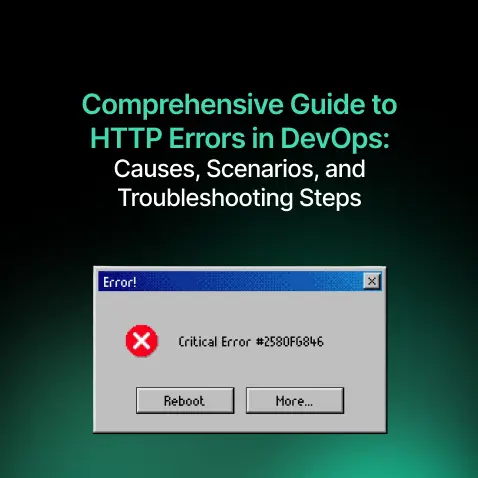
Comprehensive Guide to HTTP Errors in DevOps: Causes, Scenarios, and Troubleshooting Steps
- Blog
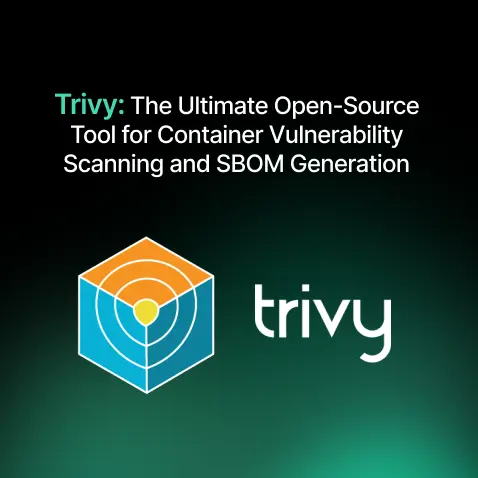
Trivy: The Ultimate Open-Source Tool for Container Vulnerability Scanning and SBOM Generation
- Blog
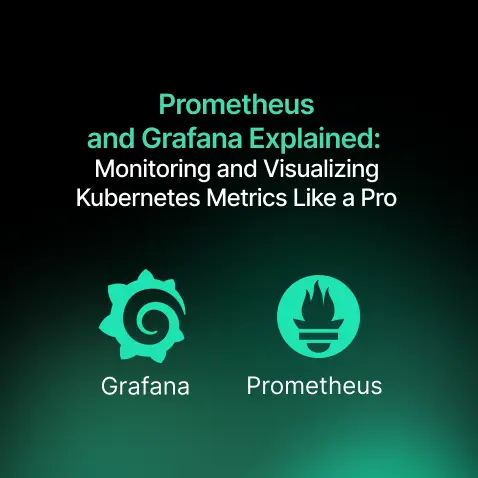
Prometheus and Grafana Explained: Monitoring and Visualizing Kubernetes Metrics Like a Pro
- Blog
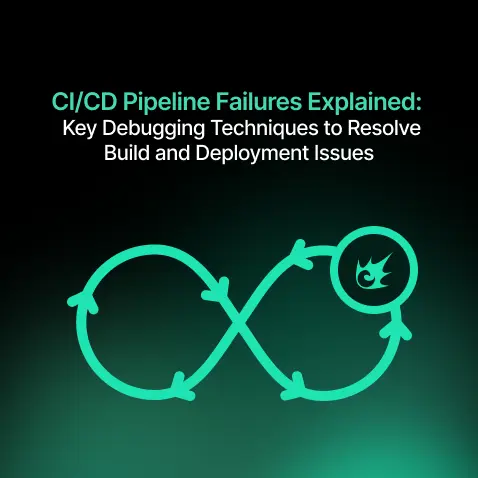
CI/CD Pipeline Failures Explained: Key Debugging Techniques to Resolve Build and Deployment Issues
- Blog
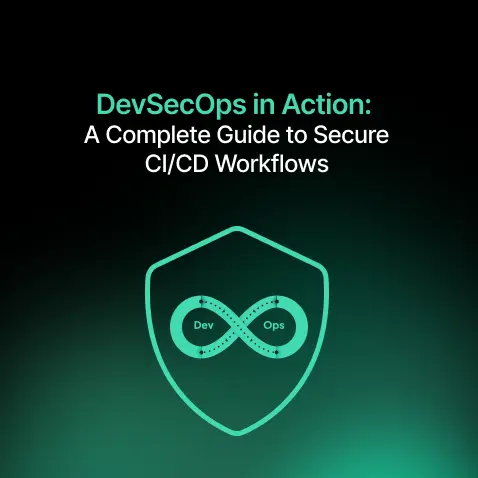
DevSecOps in Action: A Complete Guide to Secure CI/CD Workflows
- Blog

AWS WAF Explained: Protect Your APIs with Smart Rate Limiting
- Blog

